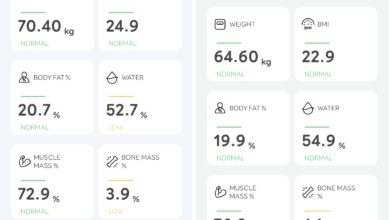Why do we Humans like Bass-heavy music?

Sound waves in the frequency between 16 to 256 Hz is known as Low-frequency sound notes. While anything between 20 and 250 Hz can be called as bass, 20-60Hz is specifically called as sub-bass and 60-250 Hz is bass. Beyond Bass, we have low midrange, Mid-range, upper mid-range, presence and brilliance in the Human hearing frequency spectrum of 20 to 20000 Hz. While there is 7 broad range of frequencies, most of us prefer music with a heavy emphasis on low-frequency sound. Have you ever wondered about the reason for this?
People not only love deep bass, but they are also relatively more sensitive to tonal changes and rhythm detection of sound in that frequency band. A study by the McMaster Institute for Music and the Mind found out that listeners are more tuned to pick up deep bass rhythms than any other tones. Most music compositions have low notes for rhythm and reserve the higher tones for melody. The primary reason for that is that humans listen to music with both body and the ear. Most of our body parts like the bones and cartilages resonate at lower frequencies. This transmits the music to the Auditory cortex of our brain faster than the transmission from the ears. In other words, music is felt by the brain if it’s of lower frequency while the tones are heard, broken down and processed at a much slower rate.
Cognitive scientist Tecumseh Fitch at the University of Vienna says that louder, deeper bass notes help people to feel the resonance in their bodies, not just hear it in their ears, helping us to keep the rhythm.

When it comes to the human brain, the Auditory cortex plays an important role in processing sound. It is a part of the temporal lobe which is responsible for the human brain to appreciate music. As a fetus, the first-ever sound the temporal lobe hears is the sound of the mother’s heartbeat. The human heartbeat is in the range of 20-500 Hz, making it a perfect low-frequency sound the human fetus listens and learns, for the most part, its lifetime until the human baby comes out of the womb. The heartbeat is what that has kept company and provided comfort for over 8-9 months. The temporal lobe is used to it as much as every single part of the human body that grows during this period. When a baby crying, a rhythming pat on the back, by the mother gives comfort as it reminds the baby about the comfort it received during its fetal status. That slow repetitive resonance calms the nerves and comforts the brain. Humans have a natural tendency to seek solace in comfort. The first every comfort humans experience is low-frequency rhythm and this memory imprint in our brain is what teaches the neurons its first lesson in music.

This first lesson is music is a lasting impression in human life that makes us appreciate low-frequency sound notes than any other frequency. The basic brain function easily identifies the resonance caused by sub-bass and bass and helps humans build the rhythm for a composition or just to hear rhythmic music. As the brain advances, it learns to appreciate other tones, but this requires additional training, otherwise known as neuron stimulation.

It is also found out in the research that, by the age of 8 the human brain does a massive neuron dump and gets rid of all the neurons that it deems unnecessary. A neuron that is not stimulated and does not contribute to brain development is deemed unnecessary. Sound, more specifically, Music plays a major part in activating neurons as the temporal lobe of the human brain spreading on both sides of it. Even after the age of 8, the stimulation can start and neurons can be activated. But it has been found that kids who are exposed to music at the age of 2 have much-improved brain activity. But coming back to music, the human brain needs to be trained to appreciate the other 5 frequency spectrum of music. No wonder the top-end of that spectrum is termed as “brilliance”.

There are also other theories that state that as age progresses, humans like to listen to music with less emphasis on bass and sub-bass. This could be due to the fact that with age, the body tends to become weak. At this point, the resonance caused by the low-frequency sounds is no more comforting after a certain level.
In other words, the human brain is trained by nature to appreciate low-frequency sounds, but it takes additional efforts and training to stimulate the brain to discern other frequency of sounds. Hence our liking for deep bass music can be given a scientific explanation.





